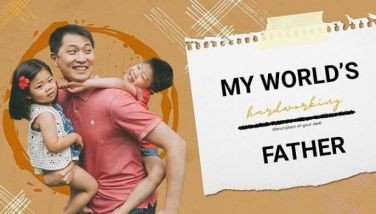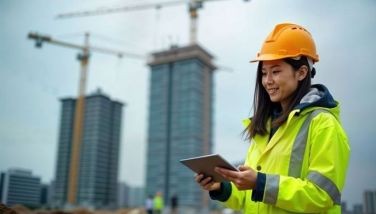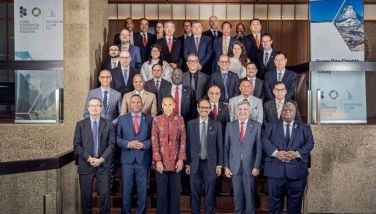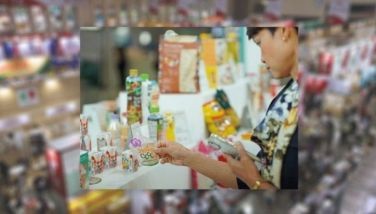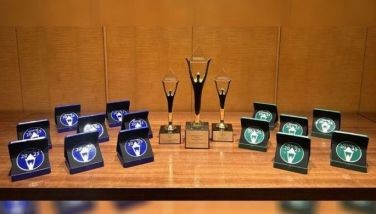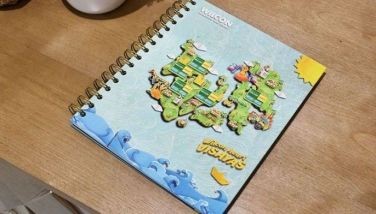The Story of Stuff Project
CEBU, Philippines - Annie Leonard couldn't stop wondering about one thing: Where do all the stuff we buy come from and where will they go when we throw them out?
Her 20-minute Web film "Story of Stuff" opened an orientation on permaculture organized by a socio-civic group here in Cebu City recently. Eventually, I got hooked to the extract because of our dire need to know more about Leonard's researches to flex the citizen muscles, not the consumer muscles, in us.
Leonard looked up the answers from textbooks, and she learned that our stuff simply moves along these stages: Extraction to production to distribution to consumption to disposal.
"All together, it's called the materials economy," she began in her online informative video project.
Looking into it a little bit more entailed 10 years of traveling the world, tracking where our stuff comes from and where it goes. And she found out that there's a lot missing from the textbook explanation.
"For one thing, this system looks like it's fine. No problem. But the truth is it's a system in crisis. And the reason it is in crisis is that it is a linear system and we live on a finite planet and you cannot run a linear system on a finite planet indefinitely," Leonard stressed.
To understand this, she pointed out that every step along the way the system is interacting with the real world. "In real life it's not happening on a blank white page. It's interacting with societies, cultures, economies, and the environment. And all along the way, it's bumping up against limits. Limits we don't see here because the diagram is incomplete. So let's go back through; let's fill in some of the blanks and see what's missing," she further said.
One of the most important things that's missing is people.
Yes, us, the people.
According to Leonard, people live and work all along in this system. "And some people in this system matter a little more than others; some have a little more say. Let's start with the government. It's the government's job to watch out for us, to take care of us. That's their job."
"Then along came the corporation. Now, the reason the corporation looks bigger than the government is that the corporation is bigger than the government. Of the 100 largest economies on earth now, 51 are corporations. As the corporations have grown in size and power, we've seen a little change in the government where they're a little more concerned in making sure everything is working out for those guys than for us," Leonard lamented.
Here are the other things missing from the big picture:
• Extraction. Leonard said that this is a fancy word for natural resource exploitation, a fancy word for trashing the planet. We are using too much stuff. Now we're running out of resources. We are cutting and mining and hauling and trashing the Earth so fast that we're undermining the planet's very ability for people to live here. Leonard said that in the United States, they have less than four percent of original forests left, 40% of waterways have become undrinkable, and the problem is not just using too much stuff, they're using more than their share. "We have 5% of the world's population but we're consuming 30% of the world's resources and creating 30% of the world's waste," she added.
• Production. What happens here is that energy is used to mix toxic chemicals in with the natural resources to make toxic contaminated products. The film pointed out that there are over 100,000 synthetic chemicals in commerce today, but only a handful of these have even been tested for human health impacts and none of them have been tested for synergistic health impacts, which means how these would interact with all the other chemicals we're exposed to every day. "So, we don't know the full impact of these toxins on our health and the environment of all these toxic chemicals. But we do know one thing: Toxins In, Toxins Out," Leonard went on. An example is Brominated flame retardants (BFRs). They are chemicals that make things more fireproof but they are super toxic. They're neurotoxins - that means, toxic to the brain. "We put them in our computers, appliances, couches, mattresses, even some pillows," she ranted.
• Distribution. This means "selling all the toxic contaminated junk as quickly as possible." The goal here is to keep the prices down, keep the people buying, and keep the inventory moving. She shared that one day while she was walking to work and wanted to listen to the news, she popped into this shack to buy a radio. "I found this cute little green radio. I was standing there in line to buy this radio and I was wondering how $4.99 could possibly capture the costs of making this radio and getting it to my hands. The metal was probably mined in South Africa, the petroleum was probably drilled in Iraq, the plastics were probably produced in China, and maybe the whole thing was assembled by some 15-year old in a maquiladora in Mexico. The price wouldn't even pay the rent for the shelf space it occupied until I came along, let alone part of the staff guy's salary that helped me pick it out, or the multiple ocean cruises and truck rides pieces of this radio went on. That's how I realized I didn't pay for the radio."
So who did pay? Leonard analyzed that people paid with the loss of their natural resource base. "These people paid with the loss of their clean air, with increasing asthma and cancer rates. Kids in the Congo paid with their future - 30% of the kids in parts of the Congo now have had to drop out of school to mine coltan, a metal we need for our disposable electronics. All along this system, people pitched in so I could get this radio for $4.99 and none of these contributions are recorded in any accounts book. That is what I mean by the company owners to externalize the true costs of production."
• Consumption. This is the heart of the system, the engine that drives it. Says Leonard: "We have become a nation of consumers. Our primary identity has become that of consumers, not mothers, teachers, farmers, but consumers. The primary way that our value is measured and demonstrated is by how much we contribute to this arrow of consumption, how much we consume. We shop and shop and shop to keep the materials flowing. And flowing they do! Ninety-nine percent of the stuff we harvest, mine, process, transport - 99% of the stuff we run through this system is trashed within six months."
• Disposal. All of the garbage (stuff we bought) either gets dumped in a landfill, which is just a big hole in the ground, or first it's burned in an incinerator and then dumped in a landfill. Leonard has this inconvenient truth to share: "Either way, both pollute the air, land, water and, don't forget, change the climate. Incineration is really bad. Remember those toxins back in the production stage? Burning the garbage releases the toxins up into the air. Even worse, it actually makes new super toxins like dioxin. Dioxin is the most toxic man-made substance known to science."
"But there's another way," she shared eagerly. "Because what we really need to chuck is this old-school throw-away mindset. There's a new school of thinking on this stuff, and it's based on sustainability and equity: green chemistry, zero waste, closed loop production, renewable energy, local living economies. It's already happening. Some people say it's unrealistic, idealistic, that it can't happen. But I say the ones who are unrealistic are those who want to continue on the old path. That's dreaming."
(FREEMAN)- Latest
- Trending












